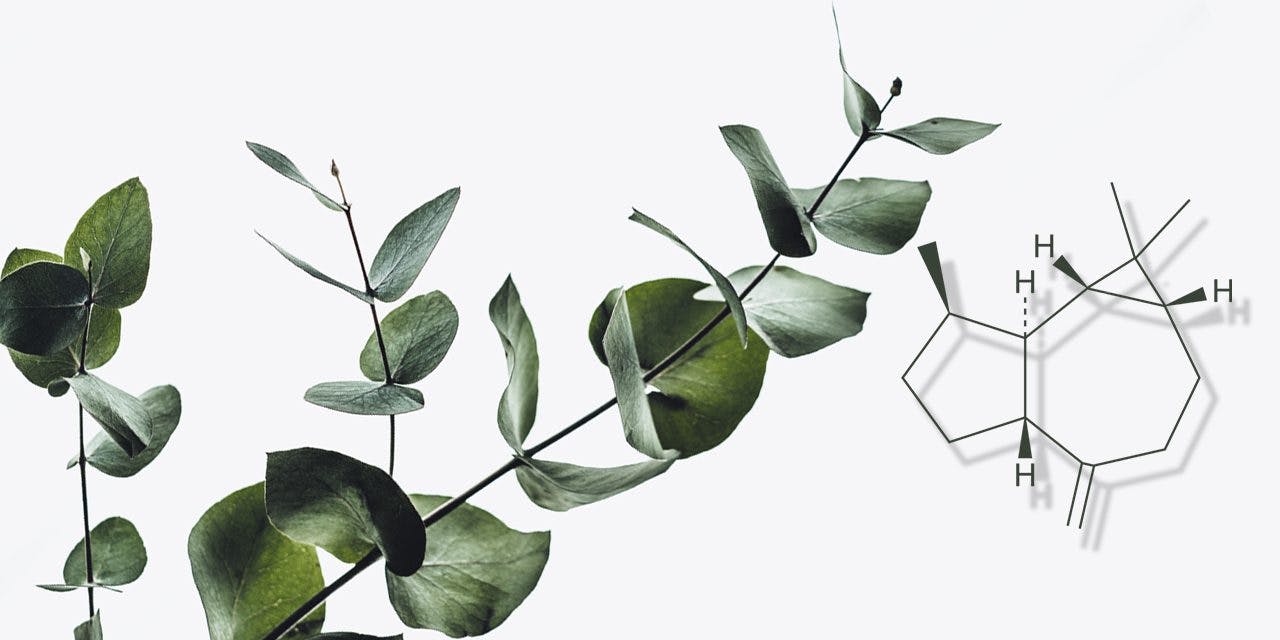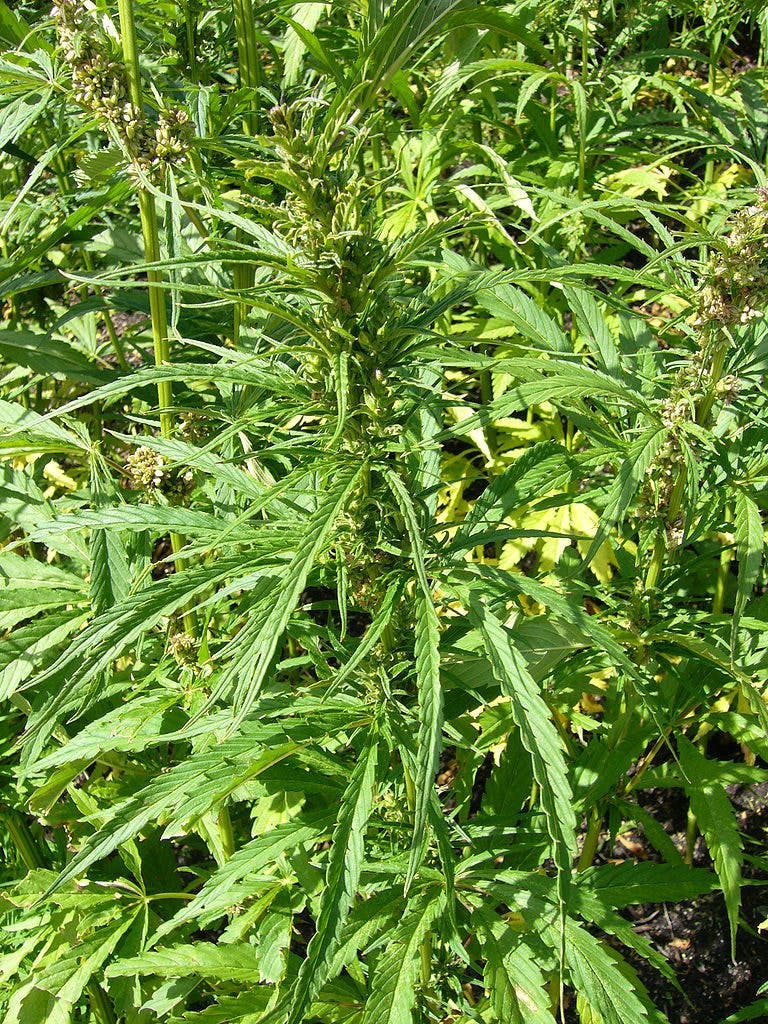What Is Aromadendrene?

Article written by

Dipak HemrajHead of Research and Education
Content reviewed by

Dr. Lewis JasseyMedical Director - Pediatric Medicine
Aromadendrene (aka alloaromadendrene) is a sesquiterpenoid and a natural product found in mushrooms of the Melanoleuca genus, Japanese honeysuckle (Lonicera japonica), and sour fruits.
Aromadendrene is also found in cannabis and plays a part in the plant’s anti-inflammatory properties via the entourage effect. This makes aromadendrene potentially very useful for managing chronic pain. Aromadendrene also has anti-cancer and antibacterial properties.
Some suggest that aromadendrene helps tetrahydrocannabinol (THC) pass through the blood-brain barrier (BBB) more readily. Aromadendrene is said to have an earthy, wood-like smell.
Get your medical marijuana card
Connect with a licensed physician online in minutes.
What Is Aromadendrene?
Aromadendrene is said to have a moderately earthy and wood-like smell and is often found in eucalyptus trees, guava leaves, pineapple, and cannabis oil. Aromadendrene is a sesquiterpenoid with the molecular formula C15H24. Other sesquiterpenoids, like sativene and sesquiracene, also have the same molecular formula. Sesquiterpenoids are the most diverse class of terpenoids.
Terpenoids are terpenes that contain other functional groups, sometimes containing oxygen. This means that, although related to terpenes, terpenoids are a class of compounds of their own with distinct effects and pharmacology.
Terpenes are considered a subclass of terpenoids. Diterpenes and sesquiterpenes are also terpenoids. Hydrolysis (splitting with water) of intermediates from farnesyl pyrophosphate gives sesquiterpenoids, and hydrolysis of intermediates from geranylgeranyl pyrophosphate gives diterpenoids.
How Aromadendrene Works
Aromadendrene’s efficacy could be due to its structure, which contains:
- An exocyclic methylene group that confers antibacterial properties.
- A cyclopropane ring that has anesthetic properties that could help reduce pain sensation.
Various terpenoids in cannabis trigger sensations like smell and taste. Triggering these sensations can elicit specific reactions based on targeted receptor systems. Most terpenes (except the terpene and atypical cannabinoid, beta-caryophyllene) do not, as far as we know so far, interact with the endocannabinoid system (ECS). However, this does not mean terpenes do not affect other receptor systems and contribute to the overall therapeutic effects of cannabis. In the case of aromadendrene, it acts on both serotonin and dopamine receptors and can promote the release of serotonin.
Health Benefits and Uses
Aromadendrene has potential therapeutic uses as an:
- Antibacterial, with aromadendrene synergizing with the terpene cineole and enhancing their antibacterial effects.
- Anti-inflammatory.
- Antioxidant.
- Antidepressant.
- Anti-cancer terpenoid, especially when combined with β-caryophyllene.
Extracts from the leaves (and sometimes fresh leaves) of the plant, Vernonia scorpioides (common names include bitterleaf, ewuro, ndole, and onugbu), have been used topically in traditional medicine for the treatment of various skin problems (e.g., pruritus, or itchy skin), allergies and chronic ulcers. Vernonia scorpioides contains many terpenes and terpenoids, including germacrene D, transcariophilene, limonene, Δ-cardinene, bicyclogermacrene, β-pinene, β-myrcene, α-copaene, α-humulene, polyacetylene, glaucolide, scorpioidin and sesquiterpene lactones alongside aromadendrene.
Get Your Medical Card
Connect with a licensed physician online in minutes.
Frequently Asked Questions
What is aromadendrene used for?
In traditional medicine, extracts from plants containing aromadendrene were used topically to treat various skin conditions, including pruritus, irritation, and acne. It is also an industrial compound used in perfumery and skincare products.
What is aromadendrene found in?
Aromadendrene is commonly found in many plants throughout the world, including cannabis. Some plants with high concentrations of aromadendrene include:
- Various plants of the Eucalyptus genus, including Eucalyptus globulus (Southern blue gum or blue gum), Eucalyptus radiata (narrow-leaved peppermint or Forth River peppermint), Eucalyptus dives (broad-leaf peppermint or blue peppermint) and Eucalyptus citriodora (lemon-scented gum).
- Cleome amblyocarpa (spider flower).
- Plants of the genus Kickxia, such as Kickxia spuria (roundleaf cancerwort or round-leaved fluellen) and Kickxia elatine (sharpleaf cancerwort).
Is aromadendrene good for health?
There is no known evidence that aromadendrene is harmful to health when consumed in fruit, vegetables, or cannabis. However, it is possible to face some adverse effects due to consumption of or overexposure to essential oils containing aromadendrene, such as:
- Drowsiness.
- Persistent cough, gagging/choking, shortness of breath, wheezing.
- Nausea, vomiting, or diarrhea.
- Skin irritation (skin exposure) and contact dermatitis.
- Chemical burns.
- Eye redness, irritation, or pain (eye exposures).
- In rare instances or after consuming large amounts, slow/shallow breathing, seizures, or coma.
Essential oils can be toxic when consumed or misapplied as they contain high, concentrated doses of terpenes and terpenoids.



